FUT/Strip Hair Transplant
FUT/Strip Hair Transplant
This is the hair transplantation method that we NEVER apply at THE ANTIAGERS Regrow clinics. Despite the fact that we have extensive experience in the FUT/Strip method, we have chosen to apply exclusively the more modern FUE method, as it has only benefits for our patients.
FUT/Strip: The method we NEVER apply
The FUT (Follicular Unit Transplantation) or Strip method is the hair follicle extraction technique that was used before the more advanced and almost bloodless FUE method was discovered. With the FUT method, an entire strip of skin is removed from the back of the scalp, from which the grafts are then separated. The separation process is undertaken by auxiliary personnel using medical instruments that often injure the hair follicles, compromising their survival. In addition, the FUT technique results in a large scar on the back of the head, which makes it difficult for the patient to return to everyday life and remains visible for life, betraying the hair transplantation process. The modern FUE method has overcome all these limitations and has only benefits for patients, resulting in older FUT method is being used less and less worldwide.
The 9 reasons why we have chosen to apply ONLY the FUE method
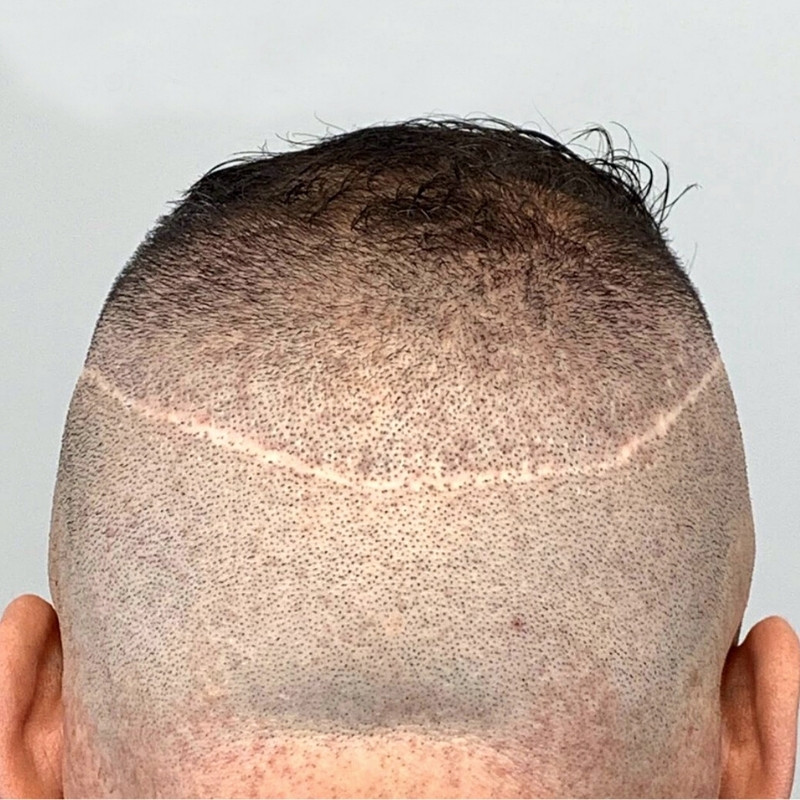
Lack of scars
FUT: FUT leaves behind a large straight scar that, depending on the capabilities of the donor area, can extend from the back of one ear to the other. The length of the scar ranges from 15 to 25 centimeters and its width from 1.5 to 1.8 centimeters. Until it heals, it causes pain, postoperative swelling and requires great attention and restriction of activities from the patient for several weeks. The scar remains visible for life.
FUE: The FUE method is performed by extracting individual hair follicles from the donor area. This technique leaves behind tiny pinhole-like holes with a diameter of less than one millimeter, which heal within 2-4 days and are no longer detectable. The patient's return to daily life is immediate, without restrictions.
Lack of pain and activity limitation
FUT: The incision in the donor area takes several weeks to heal and of course a post-operative visit to the doctor's office is required to remove the stitches. During this time, there is pain and it is necessary to limit intense physical activities (heavy training, weight lifting, strenuous work), as there is a risk of stretching the incision. In addition, the depth of the incision is such that as nerves and vessels are cut, the chances of hypoesthesia (numbness) in the donor area are increased.
FUE: In FUE, no stitches are placed, as the extraction points of the individual hair follicles are tiny. Any discomfort in the first few days is effectively treated with common analgesics, while the healing of the donor area is completed in 2-4 days without complications or side effects. Patients can return to their daily lives immediately.
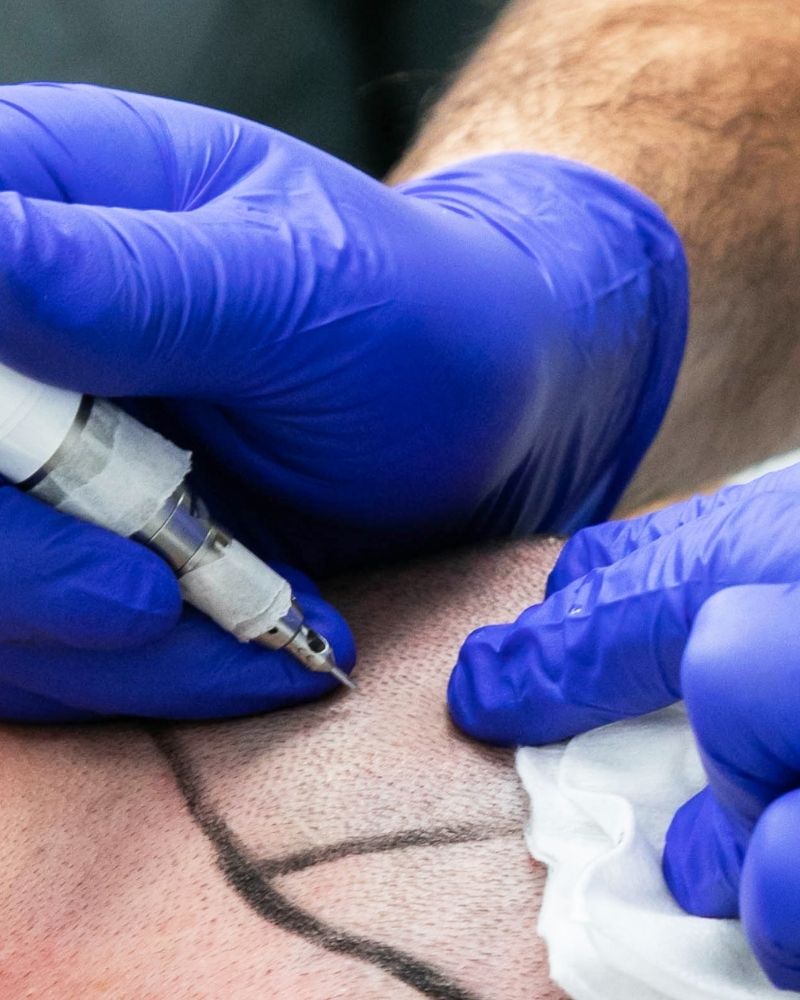
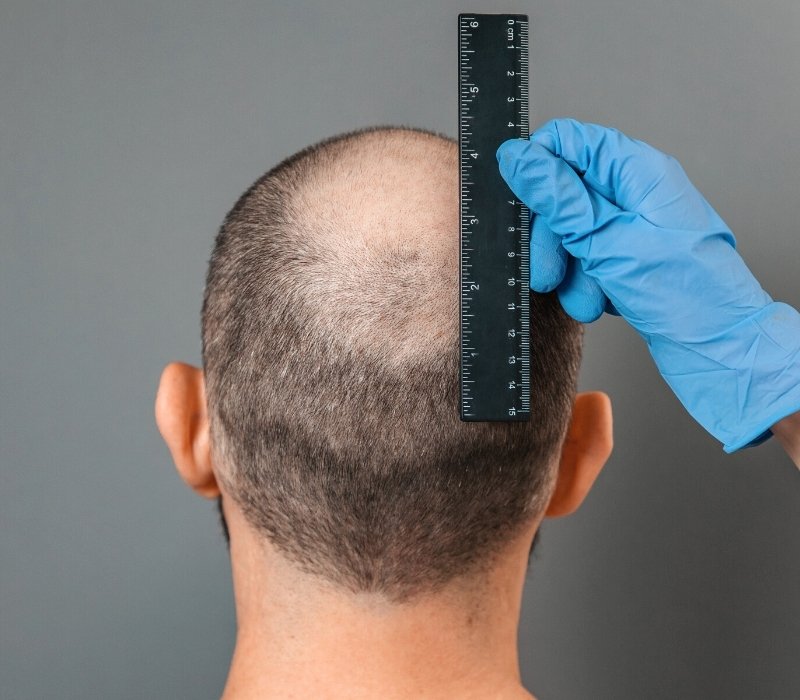
Non-exclusion of patients
FUT: Removing a strip of skin from the scalp requires that the skin be sufficiently elastic to allow the sutures required to close the scar to be placed and held in place without causing the patient any discomfort. There are many cases that are deemed "unsuitable for FUT hair transplantation" due to insufficient skin elasticity.
FUE: The FUE method does not require skin elasticity. It can be applied safely and effectively even on the tightest scalp, since no part of the skin is removed.
Haircut freedom
FUT: The presence of a scar in the donor area does not allow for the freedom of a short haircut of the scalp, without the scar being visible. In order for it to not be visible, the hair must be at least 2 centimeters long.
FUE: The FUE method places no restrictions on hair cutting and styling. It gives you the absolute freedom to cut and style your hair however you want.
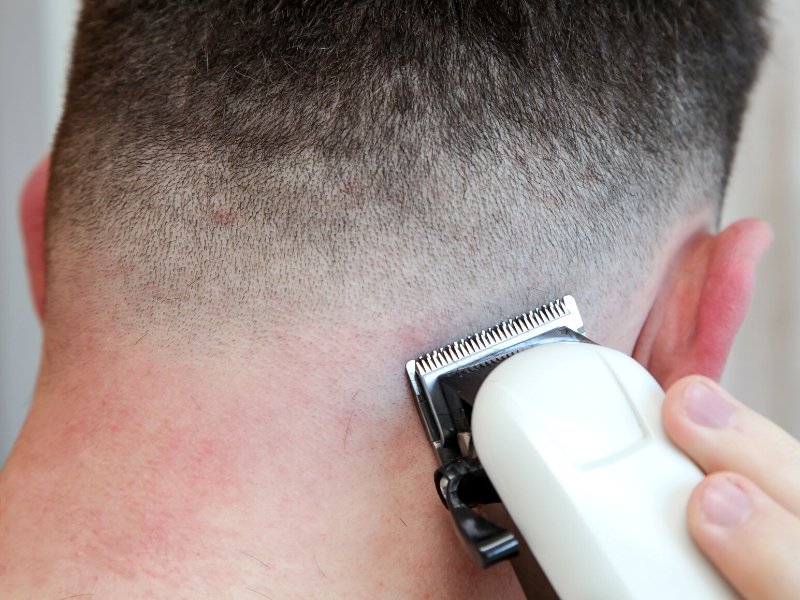
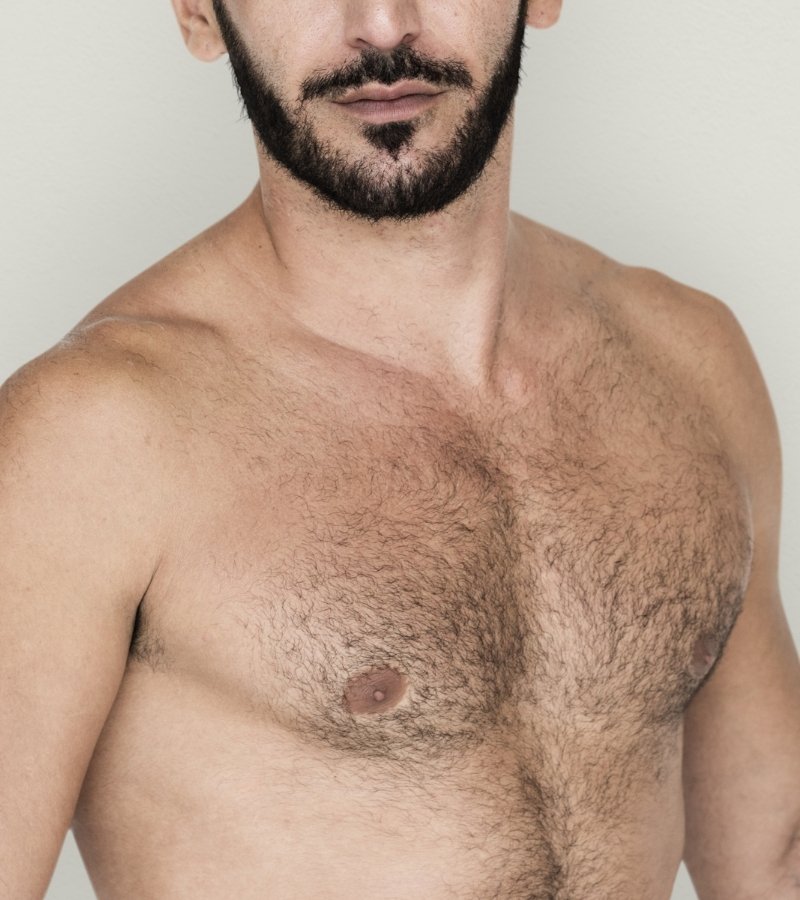
Utilization of facial and body hair growth
FUT: The back zone of the scalp functions as the donor area exclusively and only. If this is not satisfactory or is not available due to lack of skin elasticity, then the hair transplant cannot be performed.
FUE: Individual hair follicles can also be taken from other hair-growing areas of the face and body, such as the beard or chest. Also, with FUE, more hair follicles can be extracted from the back of the scalp, from areas that the FUT method cannot reach due to possible complications. In fact, it has been estimated that with FUE, approximately 30% more grafts can be extracted.
Beard/eyebrow transplantation
FUT: For beard or eyebrow transplantation, single-hair follicles are primarily required for the result to look natural. Single-hair follicles are mainly located near the temples of the scalp, therefore removing an entire strip of skin from the donor area to harvest such follicles is excessive and prohibitive.
FUE: With the FUE method, exactly the hair follicles necessary to restore the density and shape of eyebrows and beards can be extracted one by one.
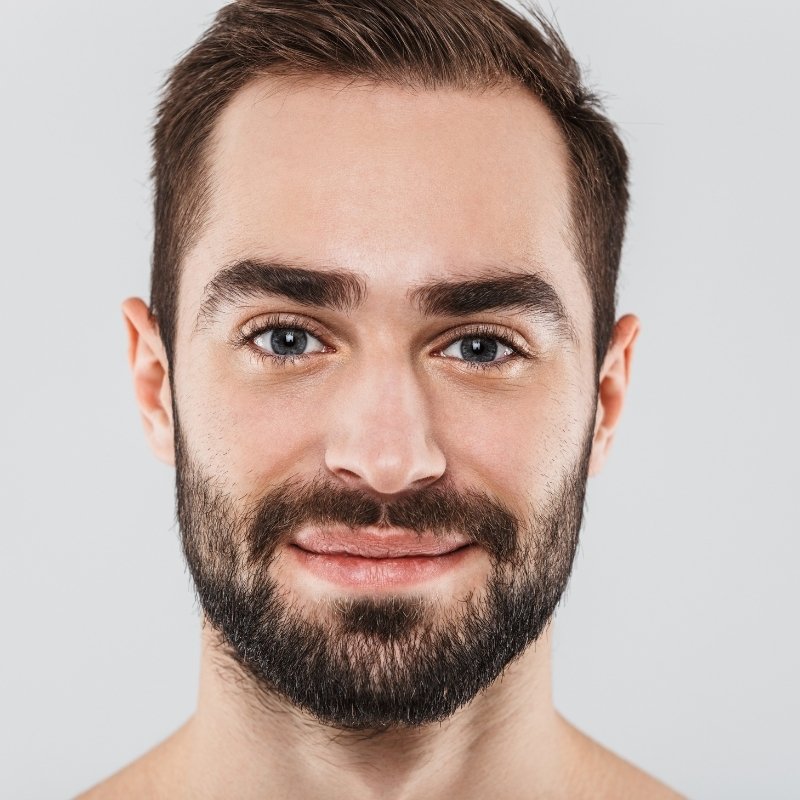
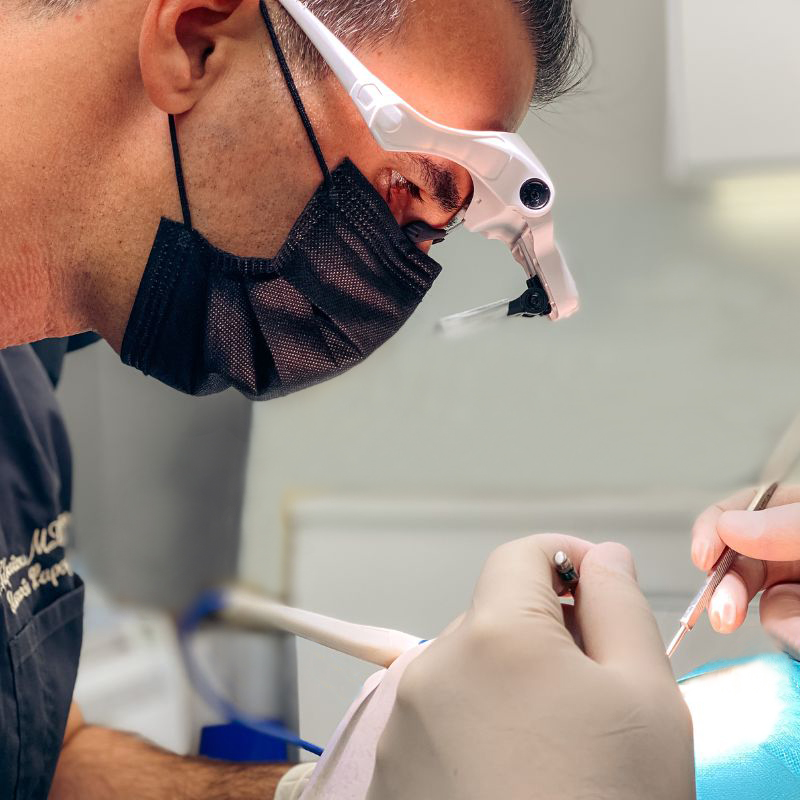
Hair growth scar restoration
FUT: The FUT method cannot restore hair growth to a scar on the face or body, since the procedure itself will create a new, much larger scar.
FUE: With FUE we can correct hair growth not only on a facial or body scar, but also the scar left behind by the FUT method.
Possibility of second and third hair transplant
FUT: Reducing the donor area by removing an entire strip of skin significantly limits the possibility of a second or third hair transplant, as it often "exhausts" the elasticity of the skin, not allowing another section to be removed again.
FUE: Since skin elasticity is not a prerequisite for the application of hair transplantation, with FUE a second or third session can be performed without limitation in order to enhance the result.
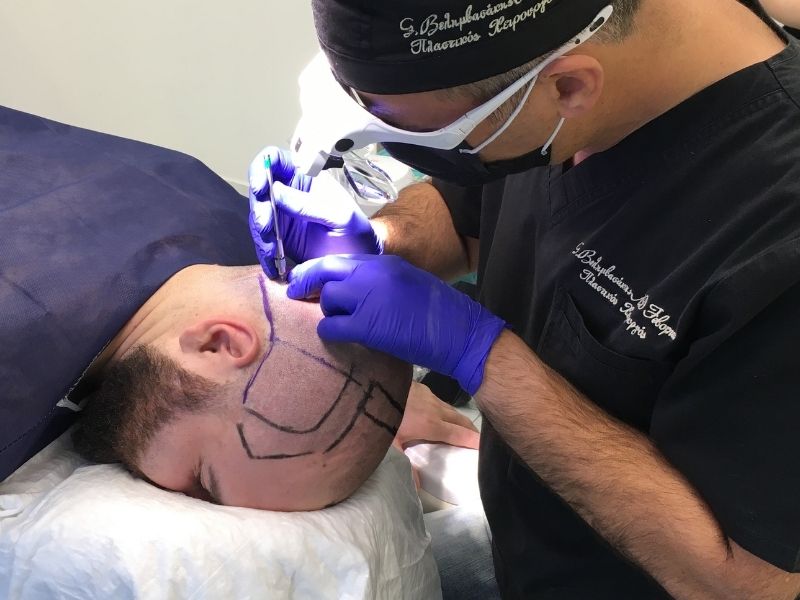
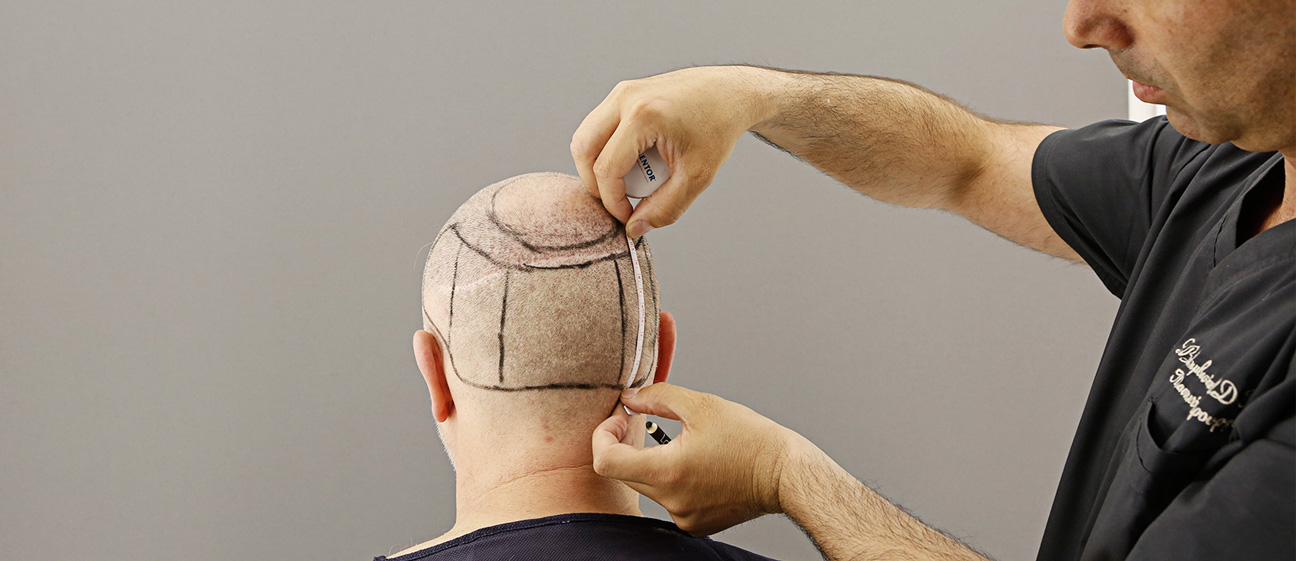
Correction of failed hair transplant
FUT: A poor hair transplant result may be due to incorrect distribution of hair follicles or poor design of the anterior line. With the FUT method, such a result cannot be corrected, since it does not allow for the extraction of individual hair follicles and their redistribution.
FUE: With the FUE method, we can correct any failures of an earlier hair transplant, as we have the ability to extract and redistribute the hair follicles, in order to provide more uniform coverage of thinning areas, to repair the anterior forehead line, and also to cover scars and marks.
Frequently Asked Questions
The first is hidden.
Your content goes here. Edit or remove this text inline or in the Content settings module. You can also style every aspect of this content in the Design settings module and even apply custom CSS to this text in the Advanced settings module.
When did the FUT method begin to be applied?
The FUT method began to be applied in the 1990s and came to replace the “punch grafting” method, which transferred entire tufts of hair to the thinning areas, with the result looking unnatural and reminiscent of a “doll effect”. The FUT method became very popular, as it offered a natural result, but its major disadvantage was and remains the large horizontal scar it leaves in the donor area, which led to the development of the more modern FUE technique.
Do you apply the FUT method?
No. After 3,500 hair transplants with the FUT method, we have now abandoned this method. We believe that it has no place in our clinic and we now exclusively apply the new advanced FUE method that offers only benefits to our patients. Apart from the fact that FUE has transformed hair transplantation into a minimally invasive procedure, it is a method that gives the doctor absolute control of the surgery. The auxiliary staff DOES NOT process your hair follicles under a microscope, nor do they place them on your head. The hair transplantation procedure is performed by the doctor and only by him.
Can the FUT method affect the result?
Yes. It is important to know that a small mistake during hair transplantation can affect 3,000 hair follicles that we have planned to transplant. It is therefore very important to choose methods and techniques that give the doctor the first decision on the management of the hair follicles, and not the auxiliary staff. With the FUT method, however, the auxiliary staff plays a decisive role in the hair transplantation process, as they are called upon to process the strip of skin with a microscope in order to separate the hair follicles that are to be transferred to the thinned areas. The survival of the hair follicles depends largely on this separation and special skill is required so as not to injure them and compromise their regrowth.